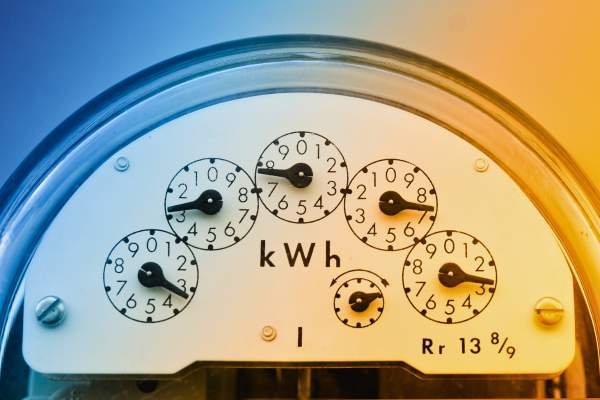Analog clocks have stood the test of time, blending timeless elegance with mechanical ingenuity. But have you ever wondered, “How do analog clocks work?” This article explores the intricate mechanisms behind these classic timepieces. From the tick of the second hand to the harmonious motion of the gears, analog clocks offer a captivating look into the art of timekeeping. We’ll delve into their rich history, unique components, and the fascinating mechanics that make them tick. Whether you’re a horology enthusiast or simply curious about what makes these clocks so enduring, understanding how analog clocks work reveals a world of precision and beauty. Dive in to discover the secrets of these enduring devices and their relevance in today’s digital age.
History of Analog Clocks

The journey of analog clocks is a fascinating narrative of innovation and precision. Originating in the 14th century, these timepieces first appeared in Europe, featuring striking mechanisms and elaborate designs. Over the centuries, significant advancements have marked their evolution. The introduction of the pendulum in the 17th century by Christiaan Huygens revolutionized accuracy in timekeeping, enhancing the clocks’ reliability. The 18th century saw further refinement with the escapement mechanism, which allowed for more precise movement control. Each milestone not only pushed the boundaries of technology but also mirrored the era’s cultural and technological ethos, cementing the analog clock as a cornerstone in the history of human ingenuity.
Components of an Analog Clock
Analog clocks are intricate devices that consist of several essential components. The clock face serves as the dial that displays the time, marked with numbers or symbols. The hands, typically three, indicate the hours, minutes, and seconds. The movement is the internal mechanism that powers the clock and ensures precise timekeeping. This movement relies on a series of gears, which work together to regulate the clock’s operations. Each component plays a crucial role in the clock’s functionality, with the face providing the visual interface, the hands indicating the time, the movement driving the mechanics, and the gears ensuring accuracy. Together, they create the charming and reliable timepieces we love.
The Clock Face
The clock face is central to an analog clock’s functionality, serving as more than just a decorative element. It plays a crucial role in the user’s ability to read time accurately and quickly. The design of the clock face can vary widely, from traditional Roman numerals to modern minimalist marks. These aesthetic choices directly impact the clock’s readability and functionality. For instance, high-contrast faces with clear numerals are often easier to read at a glance, which is vital in settings like train stations or schools. Conversely, artistic or stylized clock faces might prioritize form over function, suiting spaces where style complements utility, such as living rooms or galleries. Understanding these variations helps appreciate how analog clocks work and meet diverse needs.
The Movement Mechanism
The movement mechanism of an analog clock is pivotal to its function, comprising primarily mechanical, quartz, and atomic types. Mechanical movements harness a complex system of gears and springs, requiring manual winding or a pendulum to operate. Quartz movements, on the other hand, use a battery to send an electrical pulse through a quartz crystal, ensuring precise timekeeping. The most accurate atomic clocks utilize the vibration frequencies of atoms, typically cesium or rubidium, to measure time with unparalleled precision. Each type of movement offers unique benefits, catering to different preferences for accuracy, maintenance, and aesthetic value in timekeeping. Understanding these mechanisms unravels the marvel of how analog clocks work, blending tradition with advanced technology.
The Role of Gears
Gears are fundamental to the operation of analog clocks, playing a critical role in ensuring accurate timekeeping. Within the clock’s mechanism, gears interact to translate the power source into movement. This is achieved through specific gear ratios, which regulate the speed at which the hands of the clock move. The precise arrangement of these ratios is what allows the second, minute, and hour hands to turn at their correct paces. By adjusting the size and number of teeth on each gear, clockmakers can fine-tune a clock’s accuracy, illustrating a meticulous balance of mechanics and artistry. Understanding gear functions highlights the intricate engineering behind how analog clocks work, blending precision with traditional design.
The Pendulum and Balance Wheel
In the realm of mechanical clocks, the pendulum plays a crucial role by regulating the movement of the gears, thereby ensuring accurate timekeeping. Its rhythmic swinging back and forth drives the clock’s hands forward at a steady pace. On a smaller scale, such as in watches, the balance wheel serves a similar purpose. This tiny wheel oscillates at a consistent frequency, which governs the ticking of the timepiece. Both the pendulum and balance wheel are fundamental in the mechanics of analog clocks, embodying the precision engineering required to measure time accurately. Their seamless operation is essential for the functionality and reliability of traditional timekeeping devices.
Powering an Analog Clock

Powering an analog clock involves diverse sources such as springs, batteries, and weights, each playing a crucial role in its operation. In mechanical clocks, springs are meticulously wound to store energy, which is gradually released to move the gears. Alternatively, batteries provide a steady electrical current to quartz clocks, driving the motor that moves the hands. For traditional weight-driven clocks, gravity pulls weights down, and the released energy is transferred through a series of gears to regulate the movement. This seamless transfer of power from the source to the clock mechanism ensures the continuous and accurate display of time, highlighting the ingenuity behind how analog clocks work.
Accuracy and Adjustments
The accuracy of analog clocks can be influenced by various factors, including environmental conditions, wear and tear of components, and the quality of the clock’s construction. Regular adjustments and maintenance are crucial to ensuring precise timekeeping. To adjust an analog clock for better accuracy, one typically sets the time using the small knob on the back or side, often referred to as the crown. For more refined adjustments, a professional may calibrate the balance wheel or pendulum. Periodic cleaning and lubrication of the gears also help maintain smooth operation and accuracy. By understanding these elements, owners can significantly enhance the performance and reliability of their analog clocks.
Conclusion
In conclusion, understanding how analog clocks work illuminates the exquisite interplay of art and science in these timeless devices. From the meticulous assembly of gears and springs in mechanical movements to the precision of quartz and atomic mechanisms, each component plays a crucial role in timekeeping accuracy. Regular maintenance and careful adjustments ensure that these elegant instruments continue to mark time with unwavering precision. Whether mounted on a wall, cradled on a wrist, or displayed in a museum, analog clocks remain a testament to human ingenuity and a bridge connecting the past, present, and future of horological innovation.
